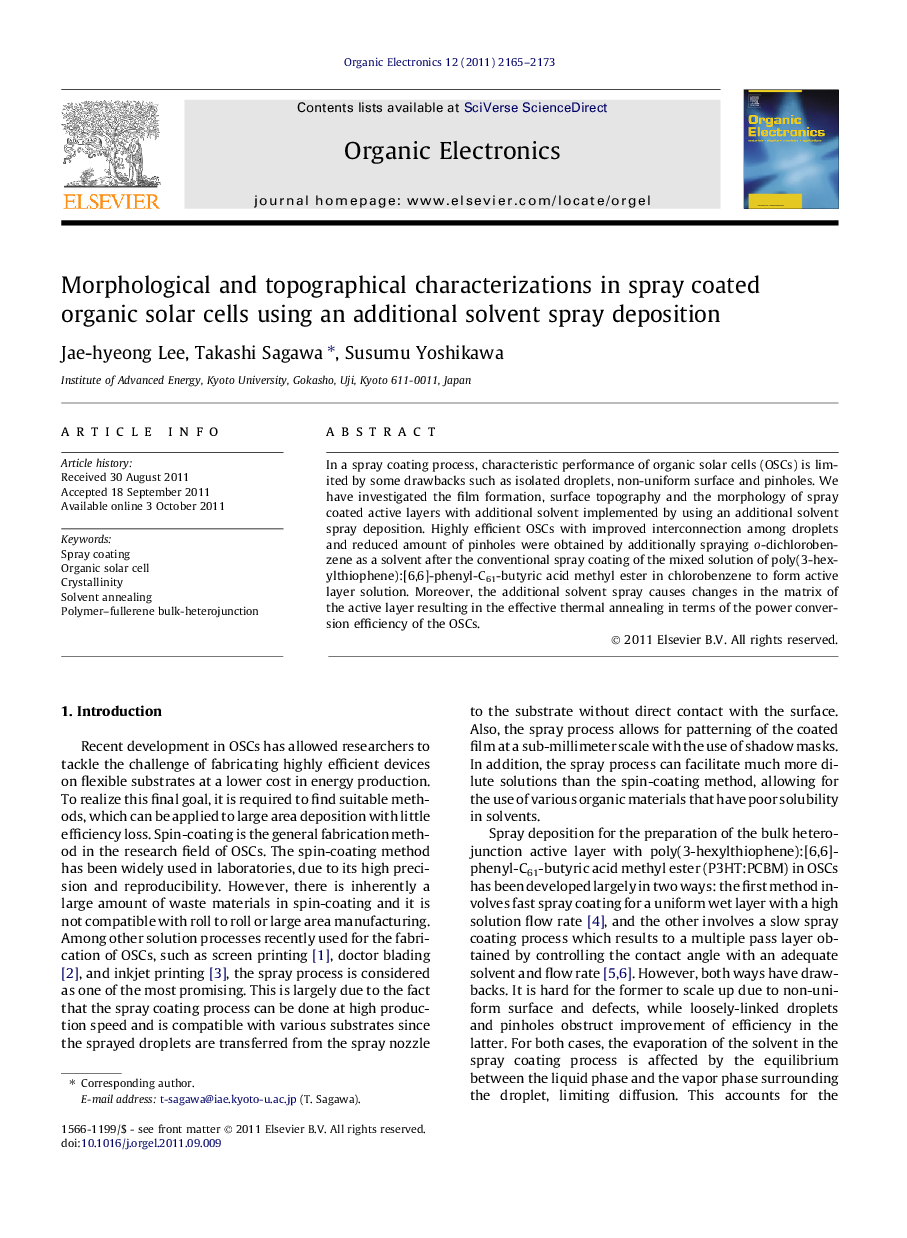| Article ID | Journal | Published Year | Pages | File Type |
|---|---|---|---|---|
| 1267577 | Organic Electronics | 2011 | 9 Pages |
In a spray coating process, characteristic performance of organic solar cells (OSCs) is limited by some drawbacks such as isolated droplets, non-uniform surface and pinholes. We have investigated the film formation, surface topography and the morphology of spray coated active layers with additional solvent implemented by using an additional solvent spray deposition. Highly efficient OSCs with improved interconnection among droplets and reduced amount of pinholes were obtained by additionally spraying o-dichlorobenzene as a solvent after the conventional spray coating of the mixed solution of poly(3-hexylthiophene):[6,6]-phenyl-C61-butyric acid methyl ester in chlorobenzene to form active layer solution. Moreover, the additional solvent spray causes changes in the matrix of the active layer resulting in the effective thermal annealing in terms of the power conversion efficiency of the OSCs.
Graphical abstractFigure optionsDownload full-size imageDownload as PowerPoint slideHighlights► Spray coating solar cells are limited by some drawbacks such as isolated droplets. ► The morphology of active layer is changed by an additional solvent spray deposition. ► Highly improved solar cells were obtained by additionally spraying o-dichlorobenzene. ► The additional solvent spray causes changes in the matrix of the active layer. ► It results in the effective thermal annealing.
